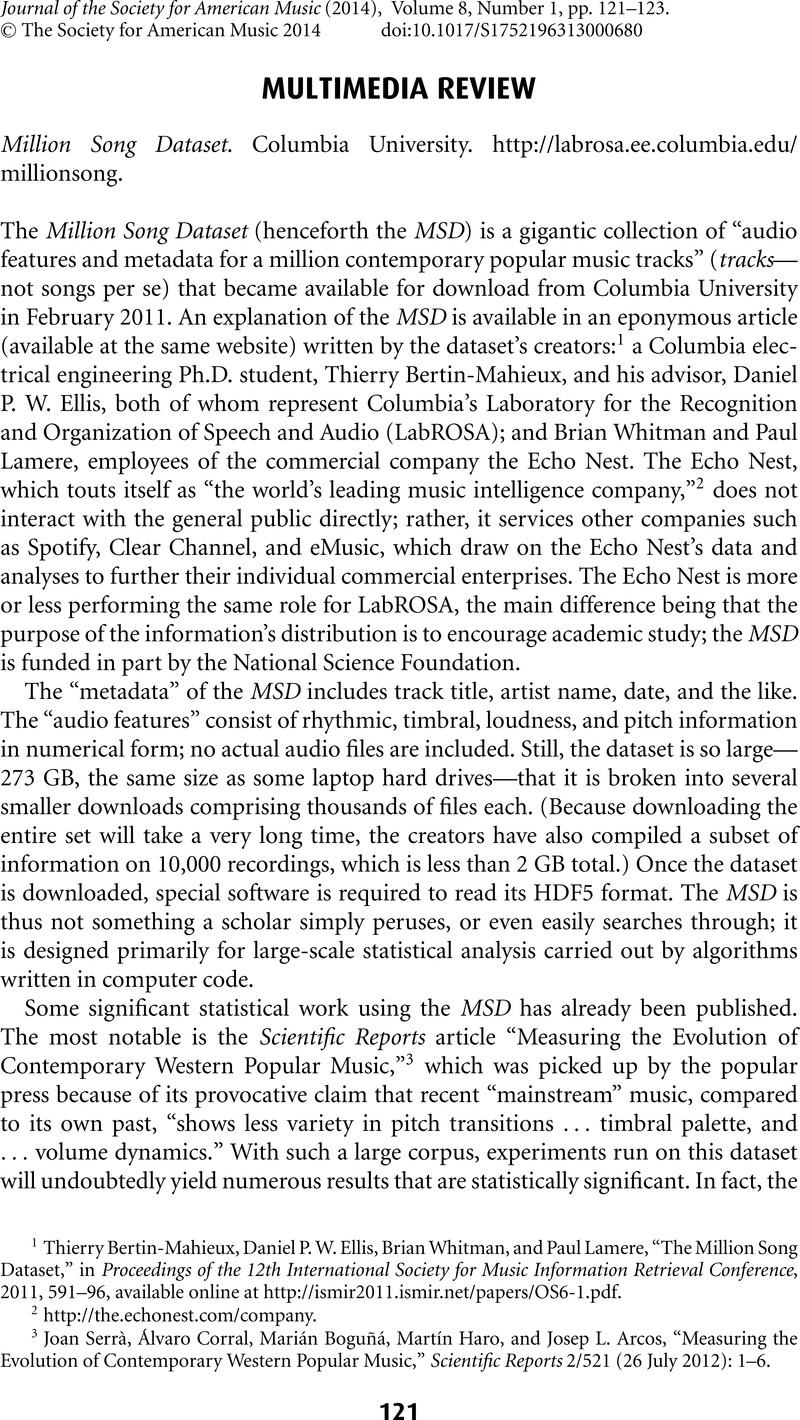Published online by Cambridge University Press: 12 March 2014

1 Thierry Bertin-Mahieux, Daniel P. W. Ellis, Brian Whitman, and Paul Lamere, “The Million Song Dataset,” in Proceedings of the 12th International Society for Music Information Retrieval Conference, 2011, 591–96, available online at http://ismir2011.ismir.net/papers/OS6-1.pdf.
3 Serrà, Joan, Corral, Álvaro, Boguñá, Marián, Haro, Martín, and Arcos, Josep L., “Measuring the Evolution of Contemporary Western Popular Music,” Scientific Reports 2/521 (26 July 2012): 1–6CrossRefGoogle ScholarPubMed.
4 See Capuzzo, Guy, “Sectional Tonality and Sectional Centricity in Rock Music,” Music Theory Spectrum 31/1 (2009): 157–74CrossRefGoogle Scholar; Christopher Doll, “Listening to Rock Harmony” (Ph.D. diss., Columbia University, 2007), 53–109; Doll, , “Rockin’ Out: Expressive Modulation in Verse-Chorus Form,” Music Theory Online 17/3 (2011): 1–10Google Scholar; Everett, Walter, “Pitch Down the Middle,” in Expression in Pop-Rock Music: Critical and Analytical Essays, 2nd ed., ed. Everett, Walter (New York: Routledge, 2008), 111–74Google Scholar; and Tagg, Philip, Everyday Tonality: Towards a Tonal Theory of What Most People Hear (New York and Montreal: Mass Media Music Scholars’ Press, 2009), 217–40Google Scholar.